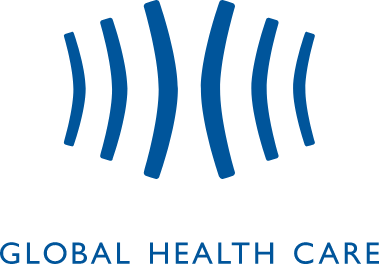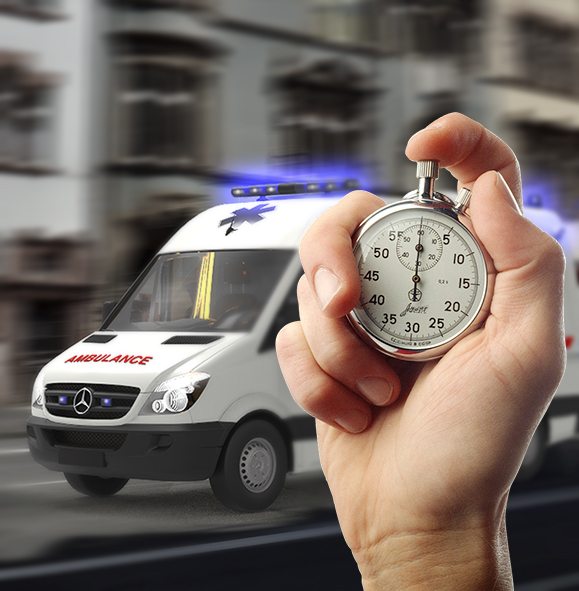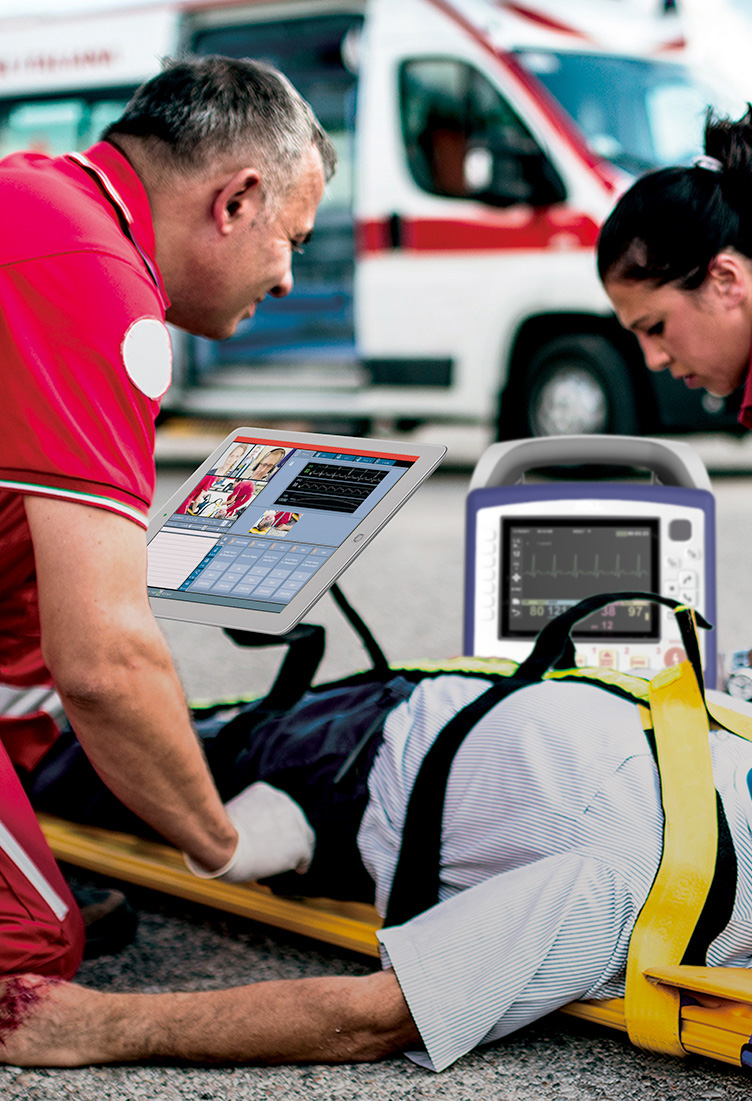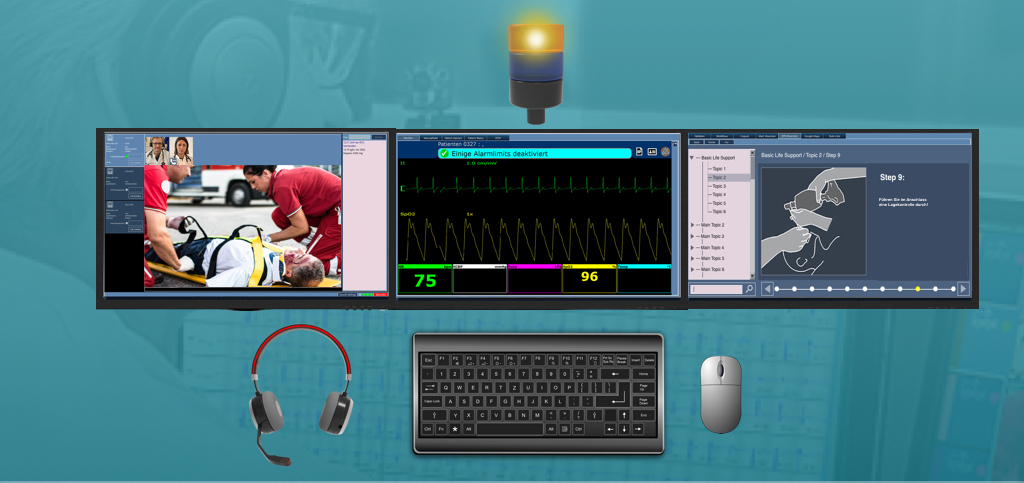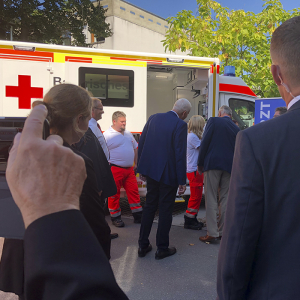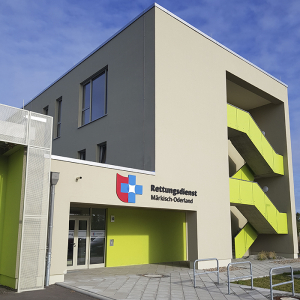Tele-emergency doctor
A tele-emergency doctor treats a medical emergency via telemedicine and regardless of where the emergency occurs, i.e. also on a ship, an offshore platform or as part of the land-based rescue system. However, it has become commonplace that the term tele-emergency doctor is associated with the land-based rescue system. GHC uses this term in a more general sense.
The therapy-free interval – The help period
What’s the problem? An emergency: every second counts! In the German rescue system, there are about 17 million missions per year, including about 2 million with NEF, 5.2 million with RTW and 5.4 million with KTW. The time span between the occurrence of the emergency and the initial treatment by the emergency medical services decisively influences the effectiveness of the treatment (therapy-free interval). With arrival times of up to 20 minutes, the survival rate is 60%; if the rescue service arrives after only 5 minutes, it rises to 85% (cf. Koch; Puhan [1992]). Every shortening of the response time causes the costs to rise progressively: Halving the arrival time quadruples the costs (cf. Riediger [1985]).
More information
An emergency physician is involved in the direct care of the patient in approximately 58% of all emergency calls. In most cases, the emergency physician arrives at the scene after the ambulance. In approx. 15% of cases, this results in a delay of more than 10 min. When emergency physicians are called to the scene, this delay is extended to up to 30 min. During this time, paramedics have been left to their own devices until now. This is just one of the problems in the daily operation of the rescue service.
Source: gbe-bund-01
RescueLink helps!
RescueLink helps to close the therapy-free interval! It enables the emergency doctor to be in live contact with the ambulance as soon as the emergency call arrives, and the treatment of the patient at the scene is guided and monitored by the tele-emergency doctor right from the start. This effectively closes the time gap in treatment for emergency care. During the patient’s transport, all of the patient’s current vital data is transmitted live, and the tele-emergency physician contacts a hospital specialised in the case via RescueLink. The emergency team in the hospital is thus optimally prepared for the arriving patient.
According to the GBA’s results report on the 3-year pilot project TNA Bavaria, in which RescueLink was used in more than 650 emergencies, the therapy-free interval was shortened to an average of 1 minute and 49 seconds, which significantly increased the patient’s chance of survival.
Source: Ergebnisbericht GBA TNA Bayern
Where is the tele-emergency doctor?
If you are planning a TNA project and have not or not yet implemented the tele-emergency doctor service, you can use our telemedicine service. With our partners, we offer the round-the-clock tele-emergency doctor service.
Full integration-Quick start
In order to integrate RescueLink into the specific IT infrastructure of a rescue service, RescueLink works together with other applications. In the case that the ambulance service already has digital deployment protocol (ePCR) software in operation, RescueLink exchanges information with this software and is thus automatically integrated into the IT infrastructure of the ambulance service. Otherwise, RescueLink operates the interface directly with the control center software, for example.
Getting started with comprehensive emergency telemedicine is easy with RescueLink. Even the use of a smartphone with RescueLink, which is equipped with several SIM cards from different providers, makes it possible to implement use cases both in an ambulance and outside the ambulance with one system. Information about further expansion stages with extended functionality can be found as a download in our brochure.
Entry configuration
- Smartphone with multiple SIM cards from different providers
- RescueLink for communication between emergency paramedic and TED
- Defis that send data to a server can use the smartphone as a hotspot
Advanced configuration
- Fixed bonding router in the ambulance bundles all available bandwidths into a single data stream
- Roof antenna with powerful reception
- PTZ camera (pan-tilt-zoom) for remote control by the TED
- Smartphone can be replaced by a tablet if required
Full configuration
- RescueLink permanently installed in the ambulance
- Room microphone and speaker
- Satellite system connected to the bonding router, thus network coverage almost 100%.
What is needed at the TED?
Stationary TED
TNA workstation (also Virtual-Emergency-Room-VER)
Separate displays of information from the RTW on multiple screens:
- Audio-visual as well as textual communication
- Real-time device data
- Additional case data
Mobile TED
- Emergency doctor in the field (NEF)
- VER is installed on a tablet
- Compact display of all information on one screen
Successful missions
TNA Bavaria Innovation Fund Project
The project Telenotarzt Bayern, funded by the Innovation Fund, was carried out with the RescueLink software at the Straubing site with 21 RTW and successfully completed in 2019. The project result is available in the form of a report. The evaluation of the project result leads to the recommendation of the GBA to introduce Telenotarzt in Germany.
TNA Münster
TNA Münster is a pilot project coordinated by the company ZOLL Medical with the fire brigade of the city of Münster. GHC is making a significant contribution to the success of the project with its telemedicine software and uninterrupted network.
Rescue service MOL
EFRE-funded research project X-INTEGRAL in cooperation with the rescue service Märkisch-Oderland.
